Seven Financial Resolutions
The year 2020 presented us with unique challenges. Never has a singular event had such wide-ranging repercussions as the Covid pandemic.
It has touched nearly every area of our lives. Schooling, socializing, family gatherings, travel and more. And the restraints from social distancing and restrictions implemented to slow the spread of Covid remain in place.
Of course, it wasn’t just our daily routines that were impacted. The economy and our investments saw unprecedented swings in 2020.
Yet, we are an optimistic nation. As the economy was set to climb out of a deep hole, investment legend Warren Buffett said, “I remain convinced—nothing can basically stop America. The American miracle, the American magic has always prevailed, and it will do so again.”
Last year’s strong finish for stocks suggests Buffett is on the right track.
As we enter a new year, we tend to look back at our successes, our challenges, and new goals for the upcoming year. Without a doubt, we all faced challenges in 2020. But I believe we can all herald personal victories, too.
I’m convinced most of us are hopeful as we look to 2021. I know I am.
New Year’s resolutions are one tool that offer us guideposts as we begin the cycle anew. Surveys say that more than half of adults make resolutions—yet, we know far fewer keep them.
The top two resolutions center on money and health. My goal is to keep things simple and realistic, focusing on resolutions for your finances.
I’ll offer you options. Some may seem simple, but the foundation of any financial plan must be built on the basics, the fundamentals.
Some may apply to you. Others may not. But I encourage you to grab ahold of what is realistic.
7 financial resolutions to get you started in 2021
1. Make a budget. You won’t know where your money is going until you track your expenses. You might be surprised how much you spend on various items. You’ll also find ways to reduce some expenditures. That puts and keeps money in your pocket.
Of course, some of us are saving due to the pandemic. We miss restaurants, concerts, movies and sporting events. But what new habits have we learned in 2020 that we can carry over into the new year?
2. Establish an emergency fund. Nearly 30% of Americans don’t have savings for an emergency. Start with the stimulus money Congress gifted you, and gradually save until you have at least three months you can set aside in the event of an emergency. Six months is optimal.
3. Start or increase saving for retirement. Maybe you don’t think you can afford it. But let’s view this from another angle.
When an unexpected bill comes in, we always seem to find a way to pay for it. If your car breaks down, you know you’ll need to get it repaired. Look at retirement as your car that needs to be fixed.
One easy way is to sign up for automatic drafts into your 401k or IRA. Do you want to save 10% of your income? But does that goal seem out of reach? Then start with baby steps—two or three percent of income will be your starting point.
Then double it in April and increase it by the same amount in July. Continue every three months until you hit your goal. That’s how I began socking funds away for retirement.
4. Pay down and pay off debt. You’ve created a budget, but debt continues to weigh on you like an anchor around your neck. You know the feeling.
Put away your credit cards until they are paid off. Pay more than the minimum balance and focus on high-cost debt first. When one card is paid off, put that payment towards your next loan. You’ll be surprised at the headway you’ll make.
And one more thing. When you’ve paid off a loan, reward yourself. Simple rewards are excellent incentives that keep you on track to the top of your summit.
5. Keep debt reasonable. If you have all your credit card, student, and auto loans paid off, you are ahead of the game. But just because you can borrow doesn’t mean you should.
Keep monthly outflows for your home below 28% of your pretax income and your total monthly debt payments (including credit card, mortgage, auto, and student loans) below 35% of your pretax income. These principles will help keep you on sound financial footing.
6. Give to a cause near and dear to your heart. Consider incorporating regular financial gifts toward your favorite charity or charities. Can you set up an automatic draft? If so, even a few dollars each month means you will be making a difference. Or, you may choose to volunteer your time.
7. Get your affairs in order. Finish setting up a will or trust, update your beneficiaries, update life insurance and consider a living will. A living will reflects your preferences to close family or friends regarding end-of-life medical treatment. Also, consider a durable power of attorney, which allows someone to make health-care decisions for you if you are incapable of doing it yourself.
The seven resolutions are simply guidelines and suggestions. Does it seem overwhelming? Then focus on one or two. Or, grab hold of the ones that apply to you and tackle one per month.
As we always remind you, we are here to assist you, encourage you, and point you in the right direction. If you have questions, we are no further away than a phone call or email.
A rollercoaster year ends on a high note
In terms of finance, as in so many ways, 2020 was a year none of us will ever forget. The initial outbreak of Covid and fears about its rapid spread sent stocks and Treasury bond yields plummeting in March.
The broad-based S&P 500 Index lost nearly 33.9% within a month’s time (Yahoo Finance S&P 500 data). The downdraft was fueled by the massive amount of uncertainty that surrounded the lockdowns and unprecedented interruption of economic activity at home and abroad.
Key Index Returns | ||
Index | MTD% | YTD % |
Dow Jones Industrial Average | 3.3 | 7.3 |
Nasdaq Composite | 5.7 | 43.6 |
S&P 500 Index | 3.7 | 16.3 |
Russell 2000 Index | 8.5 | 18.4 |
MSCI World ex-U.S.A* | 4.5 | 5.2 |
MSCI Emerging Markets* | 7.2 | 15.8 |
Bloomberg Barclays U.S. Aggregate Bond TR | 0.1 | 7.5 |
Source: Wall Street Journal, MSCI.com, Morningstar, MarketWatch
MTD returns: Nov 30, 2020–Dec 31, 2020
YTD returns: Dec 31, 2019–Dec 31, 2020
*U.S.D.
The swiftness of the decline was unexpected and unprecedented. But the recovery, which was borne out of extreme pessimism, caught many analysts by surprise.
Before I briefly jump into the numbers, let me reiterate one of the themes that regularly surfaces during discussion about investments.
One must be right twice to successfully time the market. You must correctly call the peak and the trough, or something close to the top and bottom.
No one can do that consistently.
As the major indexes rallied from the March 23 low, many analysts continued to warn of further declines, which never materialized. These analysts are smart people. They know their craft. But to frame it in the simplest terms, even very smart people can’t predict the future with certainty. No one can.
As baseball manager Yogi Berra once said, “It’s tough to make predictions, especially about the future.” It’s a statement that has also been attributed to Mark Twain.
That said, back to the numbers. How did the latest bear market stack up to past bear markets?
Since WWII, bear markets have lasted an average of 14 months, with a bear market defined as a 20% or greater decline in a key index such as the S&P 500.
The S&P 500 has fallen an average of 33% during bear markets.
The bear market in 2020, which was the first since the 2008 financial crisis, lasted barely over one month. While the decline in the broad-based index of 500 larger U.S companies was unusually swift, the peak-to-trough sell-off was in line with past bear markets.
What stemmed the sell-off?
The Federal Reserve announced massive new programs designed to cushion what was to be a significant blow to economic activity. Meanwhile, Congressional leaders put aside their differences and passed the $2 trillion CARES Act, which was far greater than the stimulus passed in 2009.
Q2’s record decline in GDP was followed by a record rebound in Q3. Coupled with record low interest rates, stocks posted some of the best gains we’ve ever experienced.
Here’s one way to gauge the rally. One hundred trading days after bottoming, the S&P 500 Index and the better known Dow Jones Industrial Average recorded their best 100-day advances since 1933.
Yet, the economy is not back to pre-Covid levels. Sure, some sectors have performed admirably, but GDP and employment remain below prior peaks. The unemployment rate is well above its early 2020 low, and layoffs continue at elevated levels.
Moreover, industries that depend on person-to-person interactions such as travel, airlines, restaurants, movies and more continue to face obstacles.
The new vaccines promise to alleviate these health and economic concerns, but through 2020 year-end, the rollout was underwhelming.
Maybe we’re just seeing hiccups as states grapple with a massive undertaking, but the year-end rally was due, in large part, to optimism that the vaccines will be widely available by mid-2021.
Making the case for stocks
As I’ve emphasized in prior conversations, stocks have a long-term upward bias, and that upward bias is incorporated into your financial plan. But stocks don’t rise in a straight line.
Since 1980, the average annual intra-year pullback in the S&P 500 has been 14.2%; yet, the S&P 500 has averaged a 13% advance each year, including dividends.
Last year’s pullback was 33.9%, as already stated, while last year’s total return for the S&P 500 Index, including dividends, was 18.4%.
Here are some additional data points. From 1980 to 2020 (41 years), there have been:
- 7 down years, with the average decline during a down year of -13.1%
- 34 up years, with the average increase during an up year of +18.4%
The only time we’ve had back-to-back declines during the 41-year period was during 2000–2002 (stock bubble bursting).
Additionally,
- 21 out of 41 years, we’ve had pullbacks of 10% or more, or an average of one every 1.95 years.
- 6 of the 41 years saw pullbacks of 20% or more, or an average of one every 6.83 years. (S&P DJ Indexes, LPL Research, St. Louis Federal Reserve)
What this tells us is that a diversified portfolio of stocks has a place in most of the financial plans we recommend.
We may recommend a larger or smaller allocation of stocks based on many different variables. But in most cases, equities are an integral component of a portfolio.
I hope you’ve found this review to be educational and helpful.
Let me once again emphasize that it is my job to assist you. If you have any questions or would like to discuss any matters, please feel free to give me or any of my team members a call.
As always, I’m honored and humbled that you have given me the opportunity to serve as your financial advisor, and I want to wish you a happy and prosperous New Year!


